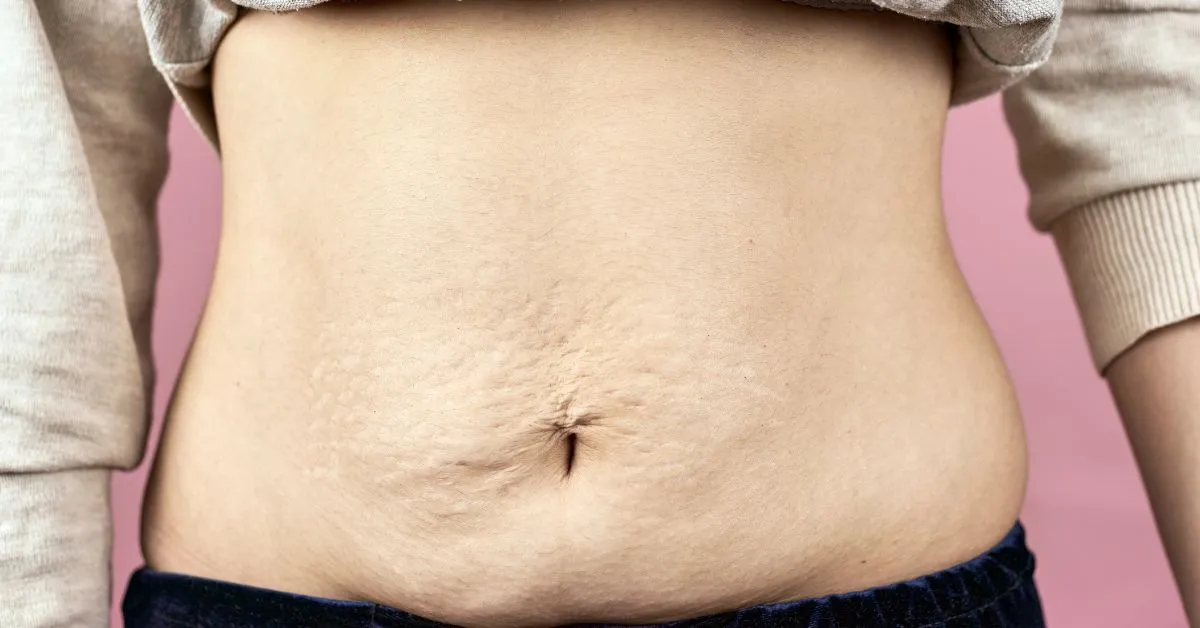Sometimes, your body tries to repair the area of damage resulting in a lumpy or uneven appearance in the treatment area. This is Fibrosis.
Fibrosis may happen due to several reasons, like infections, genetic and autoimmune disorders, including post-surgery procedures like liposuction.
Liposuction is a safe procedure. You can avoid fibrosis and other post-surgery symptoms.
In the following sections of this article, we will learn about liposuction, the occurrence of fibrosis after the procedure, symptoms of fibrosis, side effects and risks associated with liposuction-induced fibrosis, and the non-invasive and surgical treatment of fibrosis.
Understanding Liposuction
Liposuction removes extra fat cells from different body areas, such as the abdomen, arms, hips, neck, thighs, and buttocks. Depending on the complexities of the treatment and keeping in mind the desires of the patient, the surgery is carried out under local or general anesthesia.
Liposuction is not a weight loss technique and should not be carried out on patients who are very overweight. Basically, it is a cosmetic surgery that removes small amounts of targeted fat deposits from the body to give it a proper shape and enhance its appearance.
It is crucial to understand that liposuction is not a replacement for a balanced diet and regular exercise.
What Is Fibrosis?
The development of fibrous tissue in the area where liposuction was done is referred to as fibrosis after lipo. According to research, 2.3% of patients developed fibrosis after surgery.
Fibrous tissue may occasionally form in the treated area as the body reacts to the liposuction treatment. Collagen fibers make up fibrous tissue, a form of connective tissue. This tissue may make the skin lumpy, uneven, or hard, which eventually might compromise the procedure’s cosmetic results.
By adhering to the recommended post-operative care guidelines, such as donning compression garments, avoiding excessive exercise, and drinking plenty of fluids, the risk of fibrosis after lipo can be reduced.
In some instances, therapies like massage or ultrasound therapy could be suggested to help cure fibrosis and enhance the procedure’s overall outcomes.
What Are The Symptoms Of Fibrosis After Lipo?
Below is the list of signs and symptoms of fibrosis that you might face after the liposuction procedure:
- Hard or lumpy patches: Fibrosis may cause lumps and bumps under the skin, and sometimes that particular area of the skin is hard to touch.
- Pain or discomfort: You might feel discomfort and pain in the treated area, especially when moving or applying pressure.
- Swelling: Skin with fibrosis may become swollen and appear puffy or bloated.
- Limited mobility: As fibrosis can limit movement in the affected area, it might be challenging to carry out some tasks or movements effectively.
- Noticeable changes in skin texture: Fibrosis can alter the skin’s texture, giving it an uneven, rough, or dimpled appearance.
It is crucial to know that everyone undergoing liposuction will not develop fibrosis. In fact, each person might experience the condition differently.
If you are concerned about getting fibrosis after liposuction, ask your doctor – whether a cosmetic procedure like liposuction is right for you before you proceed.
What Are The Risks Of Liposuction-Induced Fibrosis?
The term “liposuction-induced fibrosis” describes the growth of fibrous tissue in the liposuction-treated area. Even though liposuction is typically thought to be risk-free, there are some possible adverse effects, such as the possibility of fibrosis.
Fibrosis results when excessive scar tissue develops in reaction to trauma or injury, such as the ones that can be formed after liposuction. This may make the skin thicker, firmer, and less flexible, which could lead to uneven or irregular contours in the treated area.
The following are other possible dangers linked to liposuction:
- Infection: Liposuction is a surgical operation; there is a chance of infection. Redness, swelling, discomfort, and drainage from the incision site are symptoms of infection.
- Hematoma: During the liposuction treatment, trauma to the blood vessels may result in hematomas (collections of blood under the skin).
- Liposuction can potentially harm the nerves that carry sensation to the treated area, resulting in numbness or tingling.
- Liposuction can temporarily upset the body’s fluid balance, resulting in swelling and fluid build-up in the treated area.
- Complications of anesthesia: Liposuction is frequently carried out under general anesthesia, which has its own set of complications, such as respiratory problems and allergic reactions.
- Blood clots are a concern associated with all surgical procedures and can be potentially fatal if they reach the lungs or other essential organs.
Non-Invasive And Surgical Options For Treating Fibrosis After Lipo
Let’s check out the non-invasive options:
- Regular deep-tissue massage: Helps in breaking down fibrous tissue and increasing circulation which reduces the appearance of bumps and lumps.
- Ultrasound therapy: It uses high-frequency sound waves and breaks down fibrous tissue, encourages lymphatic drainage, and increases the creation of collagen, thereby improving the skin’s texture.
- Laser therapy: Lasers are used to liquefy fibrous tissue and promote collagen formation. This helps in making the skin smooth and lessens the visibility of lumps.
- Radiofrequency therapy: By heating the tissue with radiofrequency energy, fibrous tissue can be broken down, collagen formation is stimulated, and lymphatic drainage is aided.
Now, let’s learn about the surgical alternatives:
- Liposuction revision: To get rid of any extra fat and enhance the contours of the treated area, a revision liposuction surgery can be done.
- Fat grafting: In some circumstances, fat grafting can be carried out in order to restore the smooth and natural appearance of the skin by balancing out the contours of the treated area.
- Excision: Surgical excision helps in removing the damaged tissue (when there is a presence of a substantial amount of fibrous tissue or scarring).
How Can I Prevent Fibrosis After Lipo?
Here are several methods to avoid fibrosis that occurs after the liposuction procedure:
- Appropriate post-operative treatment: To minimize inflammation, edema, and trauma in the treated area you need to adhere to your surgeon’s recommended post-operative care guidelines.
- Use of compression garments: As advised by your surgeon, wearing compression garments can reduce swelling and promote good lymphatic drainage. Eventually, this lowers the risk of fibrosis.
- Manual lymphatic drainage (MLD): This massage can help reduce swelling and promote lymphatic flow. As per research, MLD helps in reducing the occurrence of fibrosis after liposuction.
- Proper hydration: To improve lymphatic flow, you need to drink plenty of water, eventually lowering the risk of fibrosis.
- Quit consumption of alcohol and smoking: Drinking alcohol and smoking cigarettes can hinder the body’s natural healing process and increase the chance of problems like fibrosis.
- Use of anti-inflammatory drugs: According to some research, consuming anti-inflammatory drugs like ibuprofen may help lower the chance of developing fibrosis after liposuction. However, before taking any medication, it is advised to consult and speak with your surgeon.
- Appropriate surgical approach: Your doctor’s surgical technique might influence your chance of developing fibrosis. The risk of severe fibrosis can be decreased, and trauma can be minimized by selecting a professional and experienced surgeon who performs the most recent liposuction procedures.
While these methods may lower the risk of fibrosis after the liposuction procedure, it is crucial to remember that some degree of fibrosis might be unavoidable (because it is a part of the healing process).
Make sure to discuss your concerns with your doctor before opting for liposuction. Furthermore, you also need to share your medical history with the surgeon to avoid any complications during and after the procedure.
Reference
https://www.lipotherapeia.com/the-peach-factor-blog/fibrosis-after-lipo









